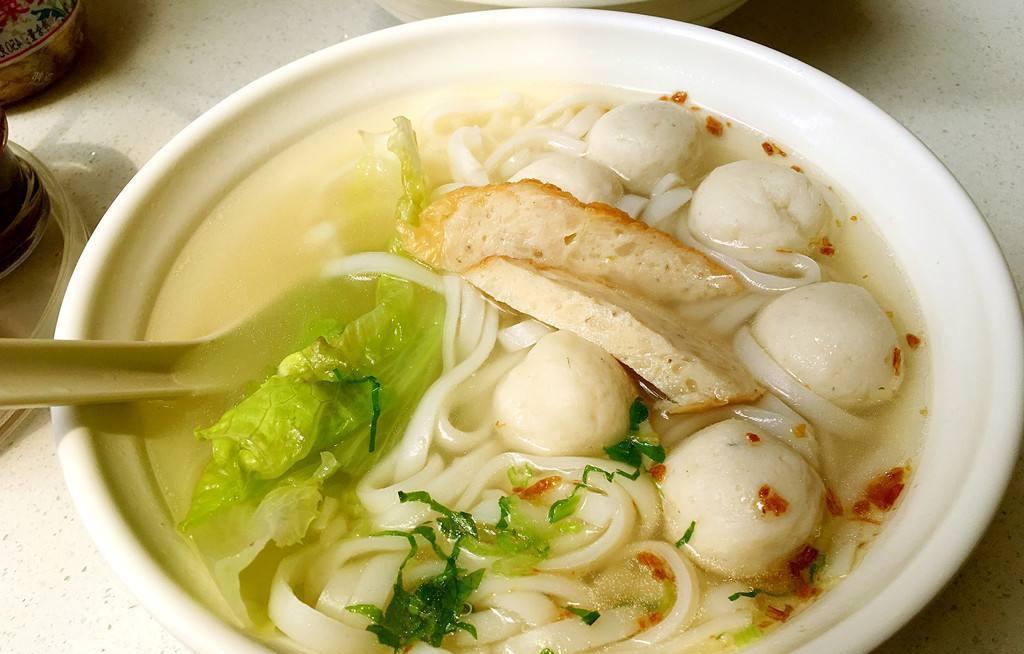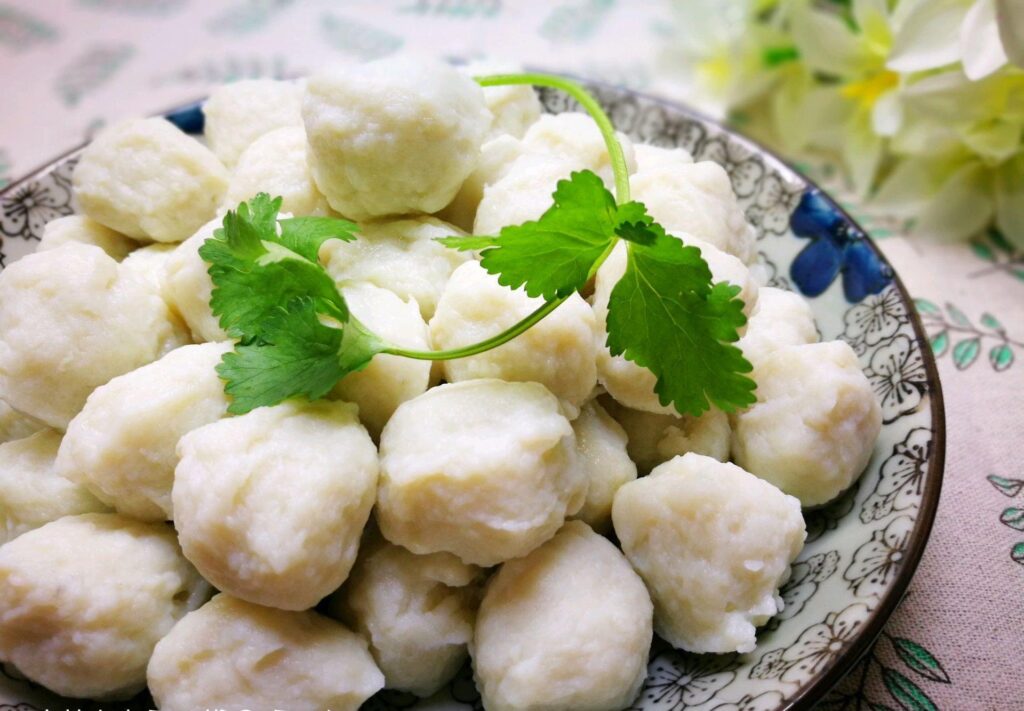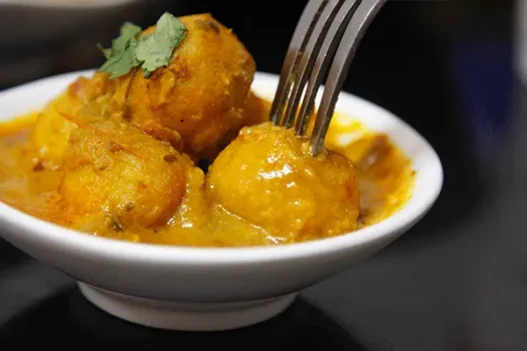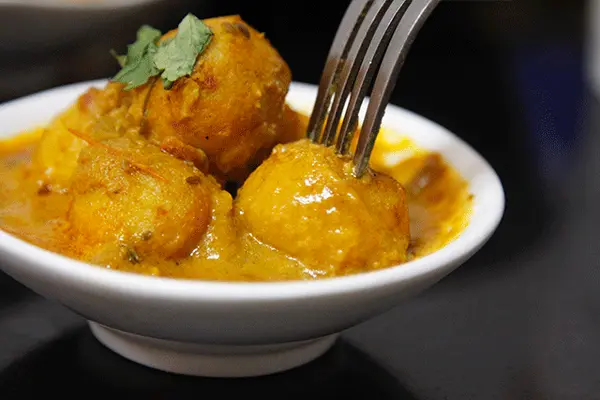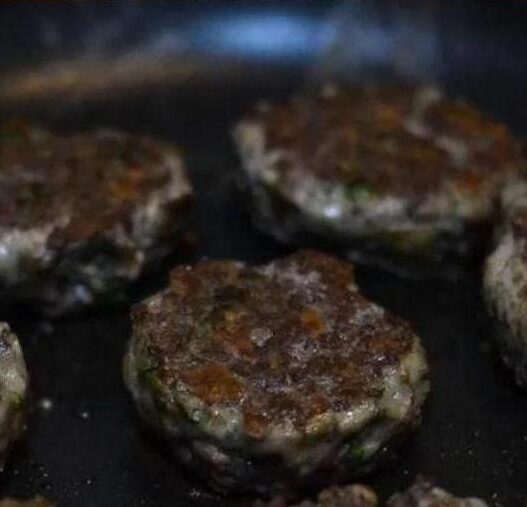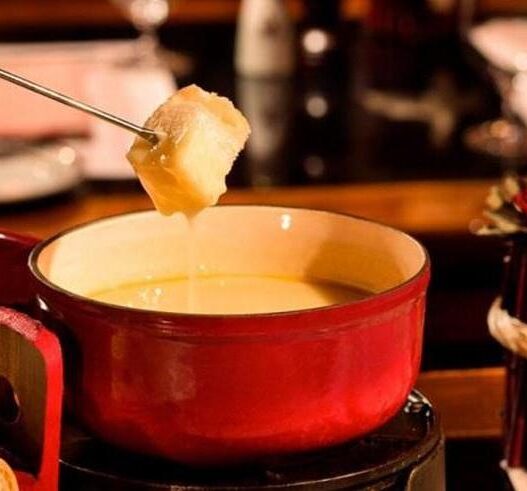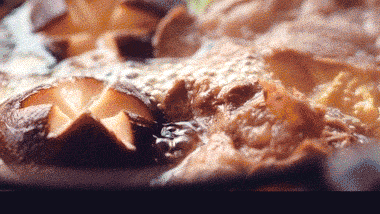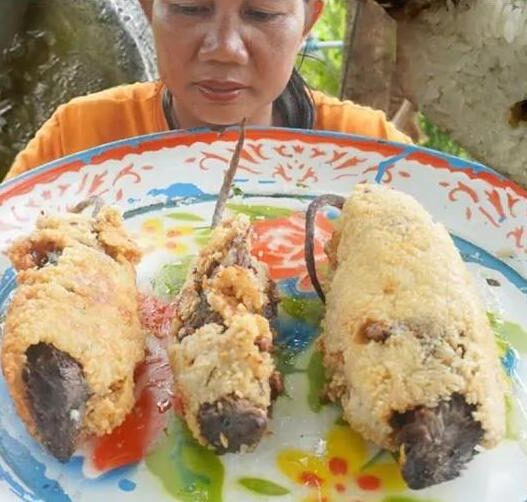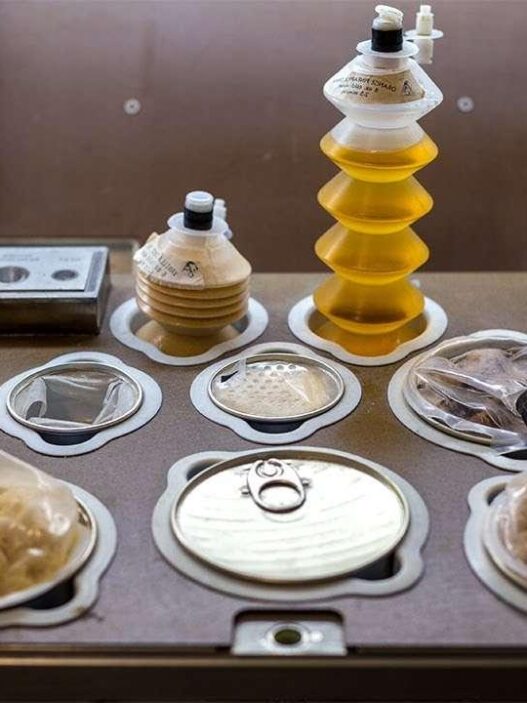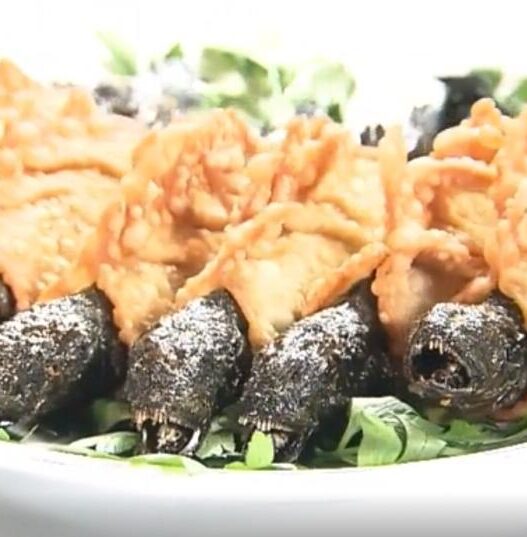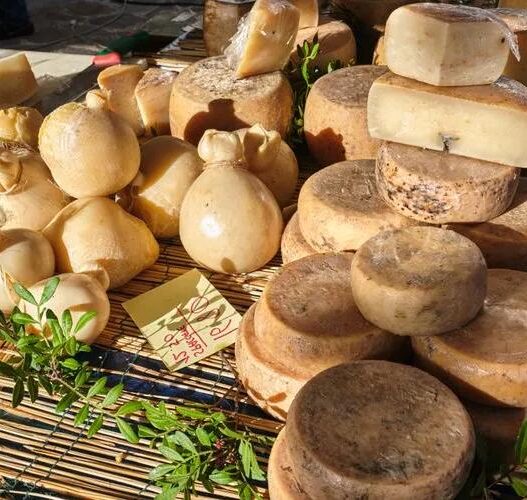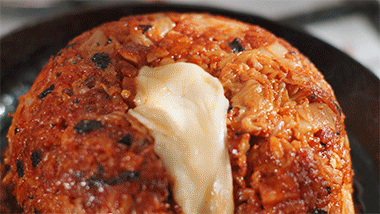Hong Kong people, like Cantonese people, love to eat and know how to eat well. The historical blend of Chinese and Western cultures has made Hong Kong’s cuisine a spectacle, embracing both Eastern and Western flavors. Whether it’s the bustling street-side restaurants, cha chaan tengs, congee shops, or dessert places, or the hidden gems tucked away in alleyways, there’s never a shortage of patrons. Fishballs, dim sum, and the ever-boiling pots at dai pai dongs are always in full swing, offering options for all tastes and budgets.
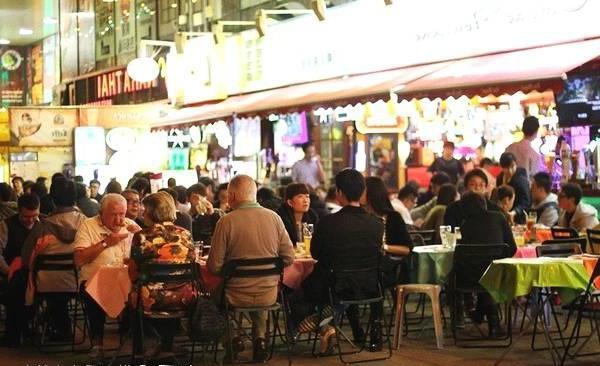
Hong Kong’s fast-paced lifestyle keeps people in a constant state of tension. By evening, even the usually polished urban elites shed their masks to gather around humble stalls, rewarding themselves with a good meal after a hard day’s work, no matter how big the issue at hand.
For foodies, a trip to Hong Kong can be planned entirely around eating. We’ve previously given a cursory introduction to Hong Kong’s souvenirs, time-honored establishments, and roasted meats. This time, let’s explore another magical presence: fishballs.
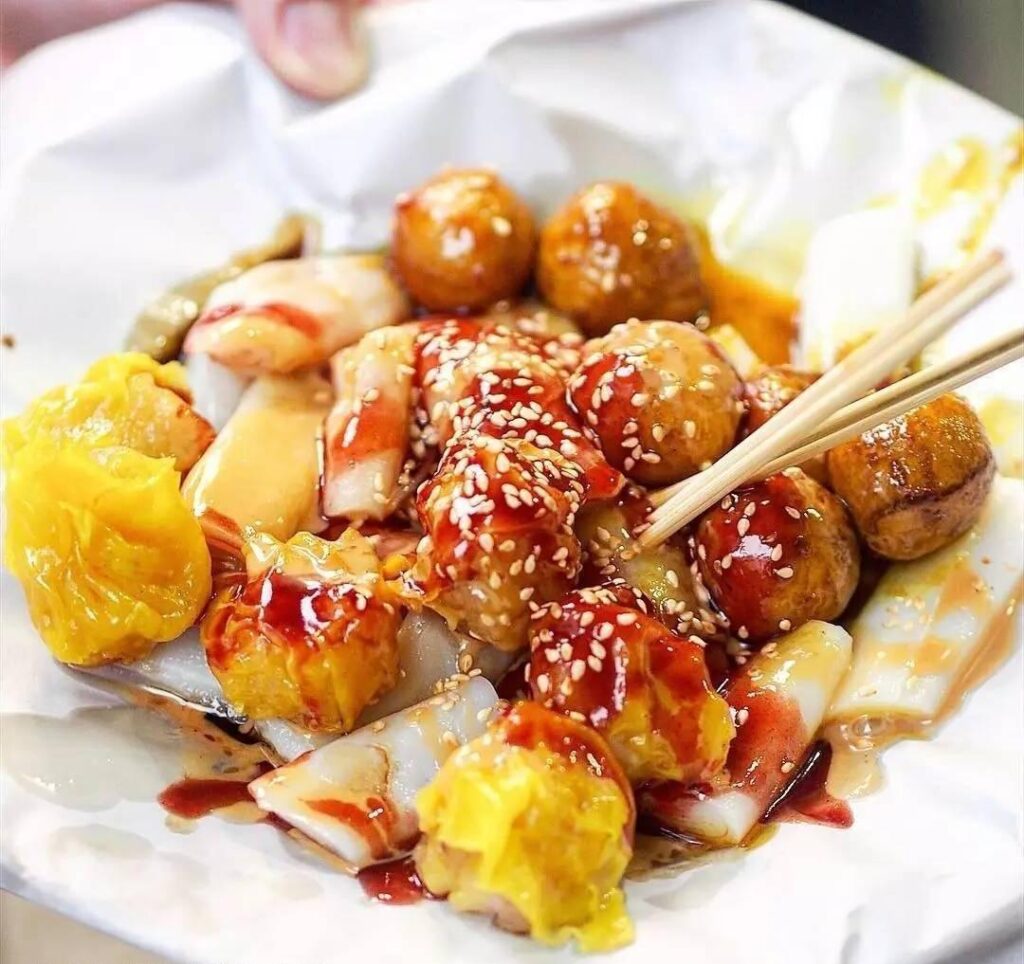
Fishballs are ubiquitous in Hong Kong life
Hong Kong people love fishballs, a staple food in their daily lives, and they often feature in classic Hong Kong films. In “Carmen of the Street,” Andy Lau tells Eason Chan to sell fishballs, a small business that represents a way to make an honest living, though it’s almost like slow suicide for the restless Eason, who’d rather be killed on the street.
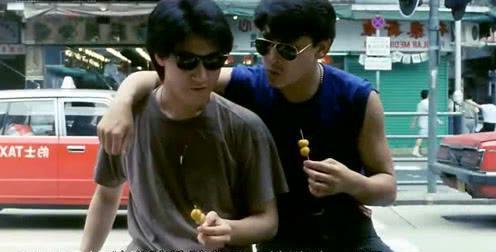
In “The Super School Overlord,” Dicky Cheung makes a grand entrance, selling the largest fishballs at the school gate, gazing infatuatedly at his crush.
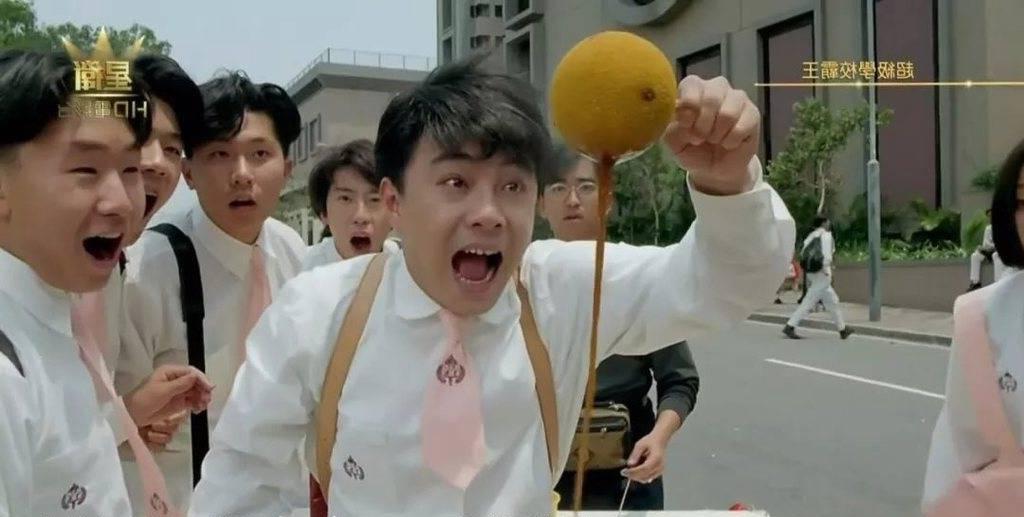
Even former TVB starlet, Myolie Wu, shared on a variety show that one of her secrets to losing 30 pounds in two months was eating fishballs as her main meal. They’re tasty, satisfying, and relatively less fattening, a win-win situation.

How much do Hong Kong people love fishballs? According to an online rumor in 2002, Hong Kongers consume 3.75 million fishballs daily, with each person eating around 185 fishballs a year. This number has only increased, reflecting their deep affection for fishballs, which have become an eternal street food in Hong Kong.
Fishballs are something many Hong Kong people have eaten since childhood. Around schools, there are always street-side carts selling marinated snacks, fishballs, and more. During breaks or after school, a few skewers of fishballs dipped in sweet and spicy sauce or curry sauce are a delightful treat. Fishballs have thus earned a place among Hong Kong students’ favorite snacks.
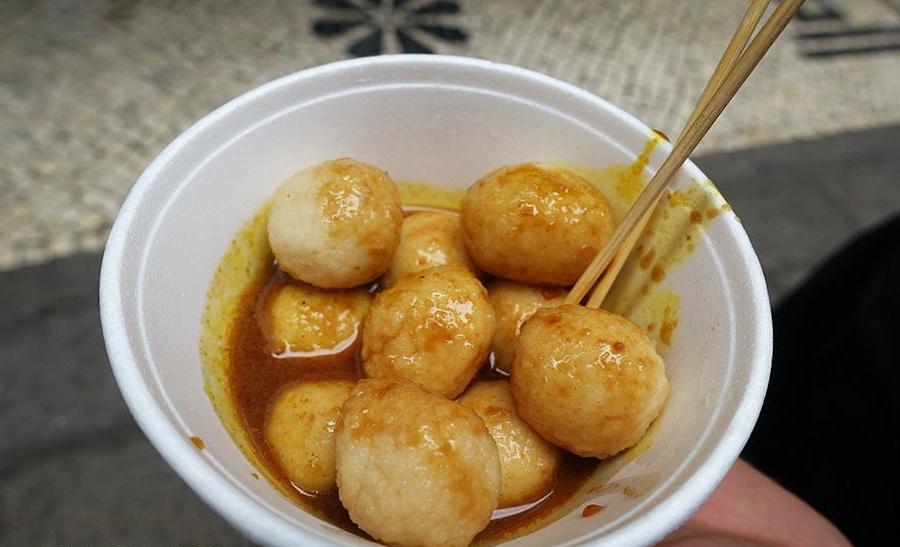
How Fishballs Took Root in Hong Kong
Fishballs are immigrant food in Hong Kong. In the 1950s, when Hong Kong was thriving and free, it attracted a wave of mainlanders seeking a stable life. As a renowned fishing port, seafood was abundant, and the Teochew immigrants made the most of the “live by the sea, eat by the sea” wisdom, bringing the fishball business to Hong Kong. Initially, to cut costs, they mixed less fresh fish with flour and fried it into fishballs for a side dish, which unexpectedly became very popular, quickly becoming a mainstay of Hong Kong street food.

By the 60s and 70s, due to relatively unpolluted seas, Hong Kong fishermen could still use high-quality fish to make fishballs. Unfortunately, due to sea pollution and overfishing, the quality of fish has declined, leading many old Hong Kongers to lament that “fishballs have lost their fish flavor,” much like mainland kids born in the 90s can hardly taste the flavor of eggs laid by backyard chickens from the 50s and 60s.
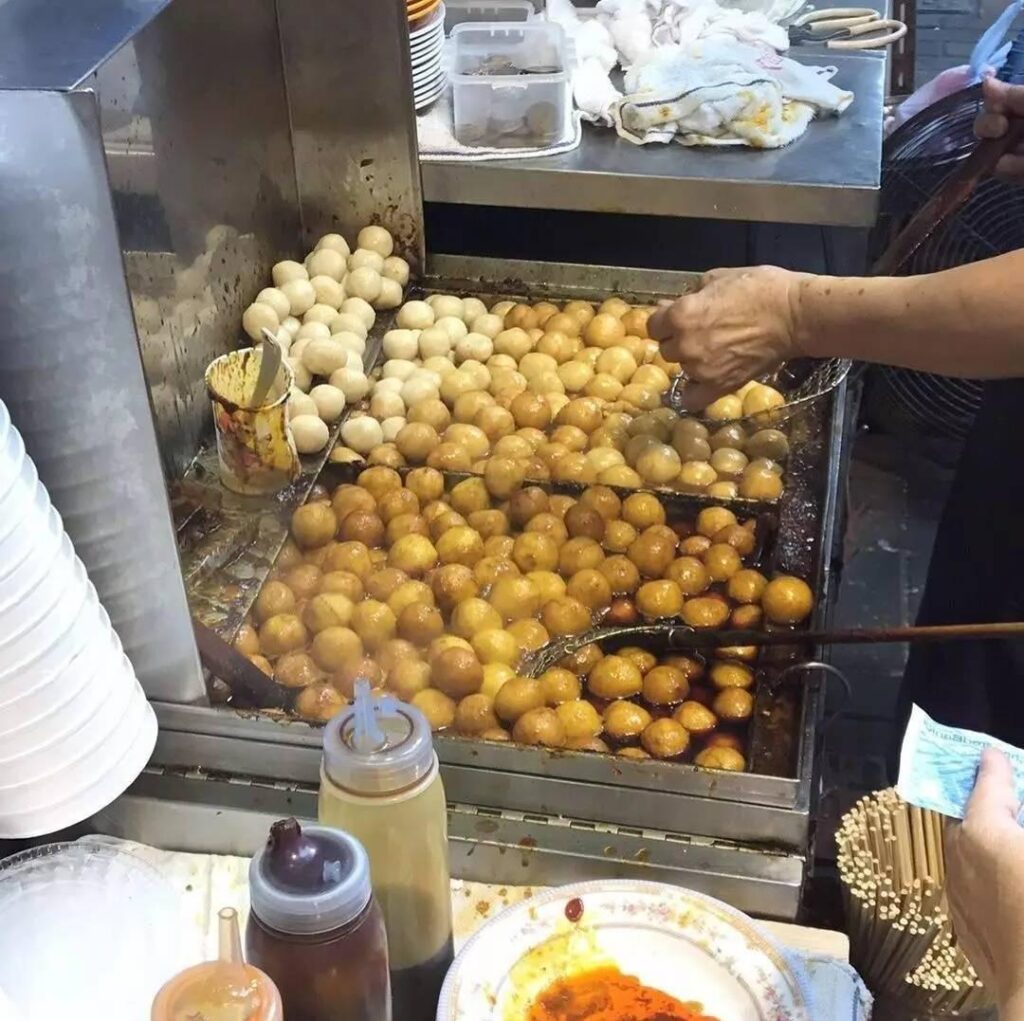
Happy or Unhappy, Have Some Fishballs
Today, there are mainly two types of fishballs in Hong Kong. One is the curry fishballs familiar to mainlanders, made with only 20-30% shark meat mixed with flour and spices, fried to a golden brown, and served on skewers or in cups with toothpicks. These stalls usually buy their fishballs wholesale, so the taste is quite similar, with each vendor relying on their unique sauce to attract repeat customers. The sauce is often sweet and spicy, with a hint of curry powder, providing a rich flavor when dipped. Whether you’re a student or a working professional, they’re a beloved treat.
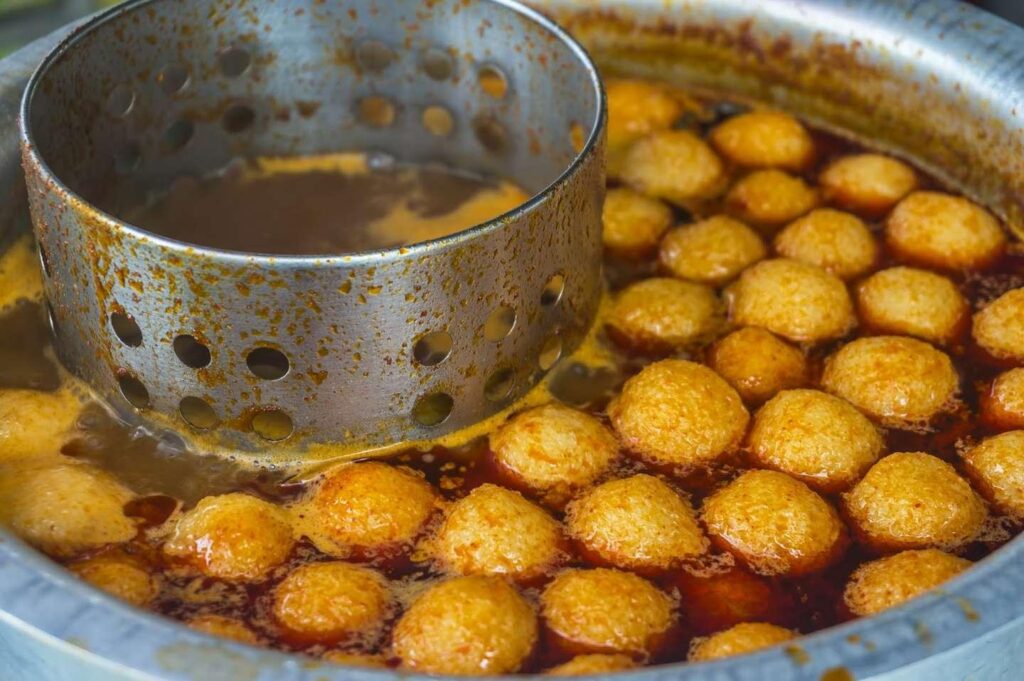
For those who prefer a lighter taste, there are original flavor fishballs heated in clear soup.
The other type is the labor-intensive Teochew-style hand-pounded fishballs. To make good fishballs, the ingredients must be top-notch. Traditionally, the raw materials are a mix of snakehead, fish, and eel in the right proportions. The fish is descaled, skinned, deboned, and the meat is mixed with ice and water, pounded into a paste, and then shaped into balls by hand and spoon.
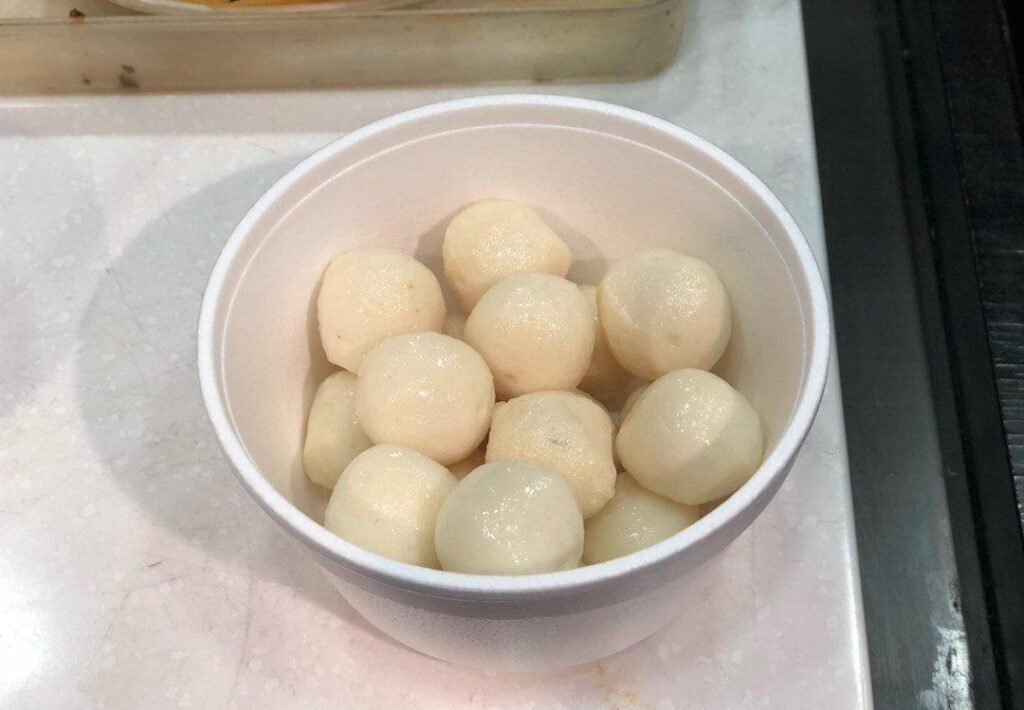
The texture of a good fishball should be tender and smooth (nián huá). Nowadays, with fewer snakeheads available, many manufacturers use frozen fish from Vietnam, leading to a change in taste, often described as “chewy.” However, in the hearts of old Hong Kongers, they’ve lost their fish flavor and become somewhat strange.
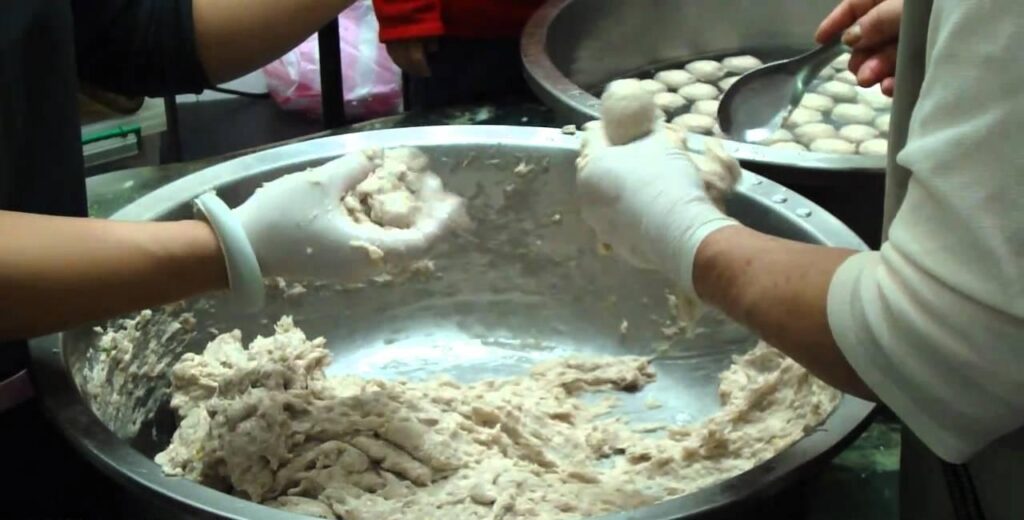
Despite their small size, the process of making fishballs is quite laborious. Chefs start work at 4 or 5 AM, continuously pounding the fish paste until it gels, a process repeated hundreds of times for just one delicious fishball. Young people find this labor unbearable, so many hand-pounded fishball masters have retired, leaving the task to machines, and the authentic Hong Kong fishball has gradually drifted away from us.
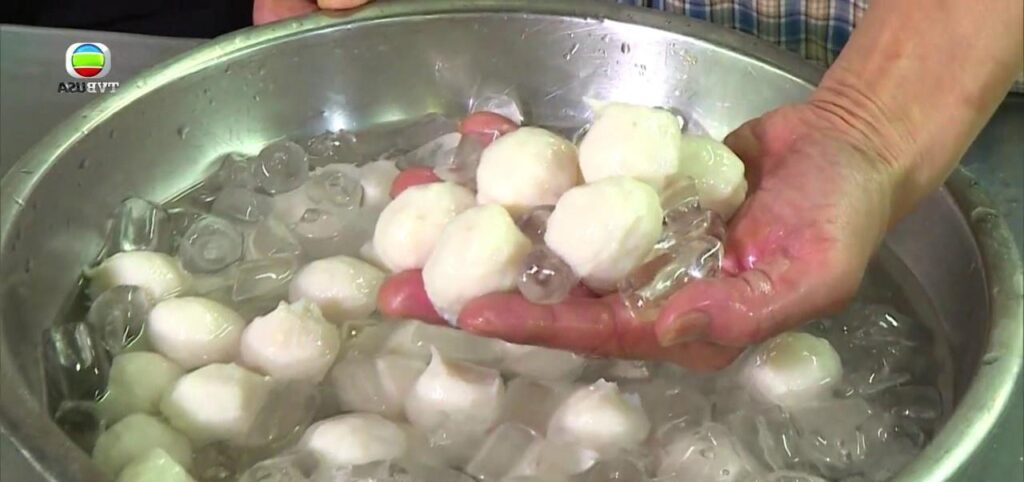
Eat Fishballs, Let’s Go!
Given the evolution of fishball flavors in Hong Kong, for foodies, whether they’re authentic or not, a taste of fishballs is a must when visiting. To enjoy fishballs with a touch of nostalgia, head to places like Tai Po or Cheung Chau, where fishermen once thrived.
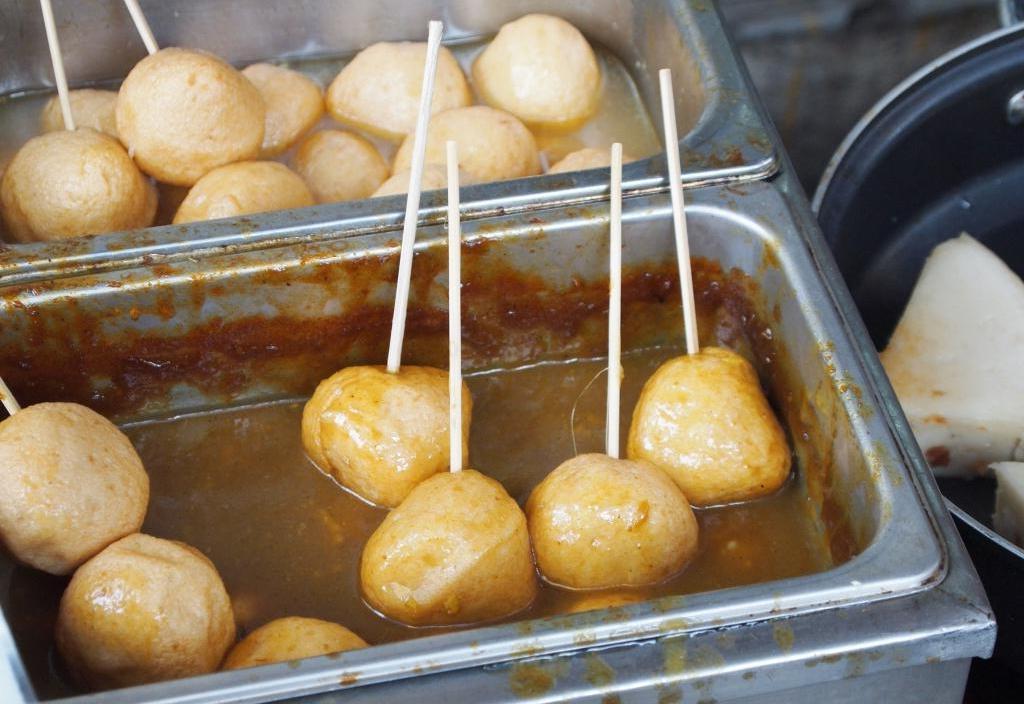
Cheung Chau, Hong Kong’s most bustling outlying island, resembles a primitive fishing village, perfect for urbanites looking to slow down and embark on a nostalgic journey. Here, fishballs come in different sizes, offering varied taste experiences. “Big fishballs,” unique to Cheung Chau, are the size of tennis balls and are served with black pepper sauce, curry sauce, barbecue sauce, sour plum sauce, and more, ensuring each one is satisfying.
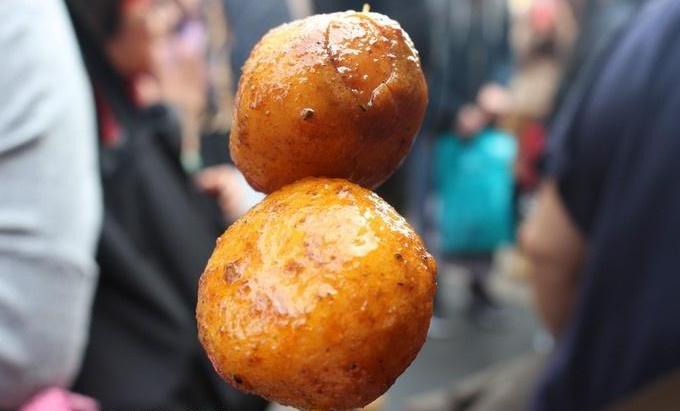
For “small fishballs,” head straight to the renowned “Kam Yung Tai Fishball” shop, one of the few remaining places in Hong Kong that still makes hand-pounded fishballs. On weekends, there’s always a long queue, with many patrons standing on the street to eat.
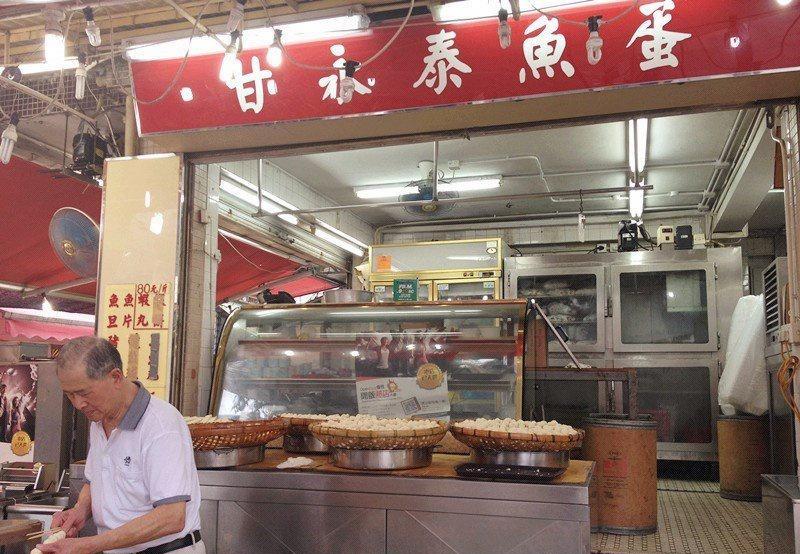
And how could we forget Tai Po? Once a fishing village, it’s now known for its fresh seafood, and many traditional eateries offer authentic flavors. Due to their insistence on hand-pounding fishballs, production is limited, and they’re sold on a first-come, first-served basis, so get there early to queue.

Cai Run Ji, located on Tai Po Central Street, has a 70-year history. Using fresh fish is a given, and if snakehead isn’t available, they’ll use more expensive alternatives, making them an honest merchant. They sell out by 2 or 3 PM every day.
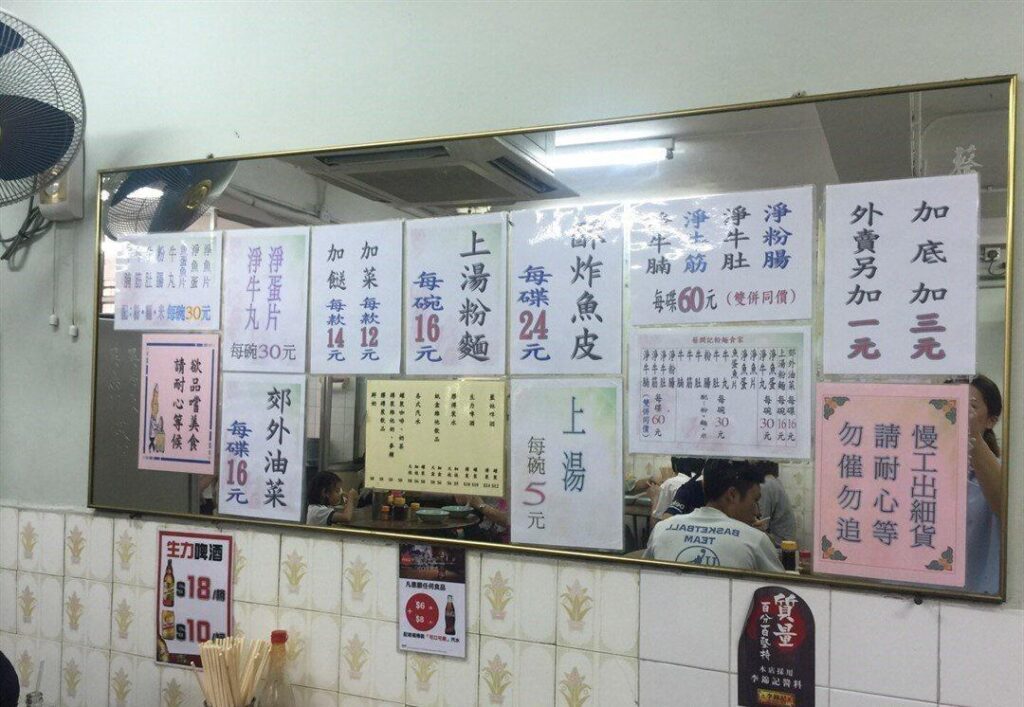
For fishball enthusiasts visiting Hong Kong, one hot curry fishball isn’t enough. Fishball noodles, fishball soup, fishball hot pot… let me indulge to my heart’s content!
